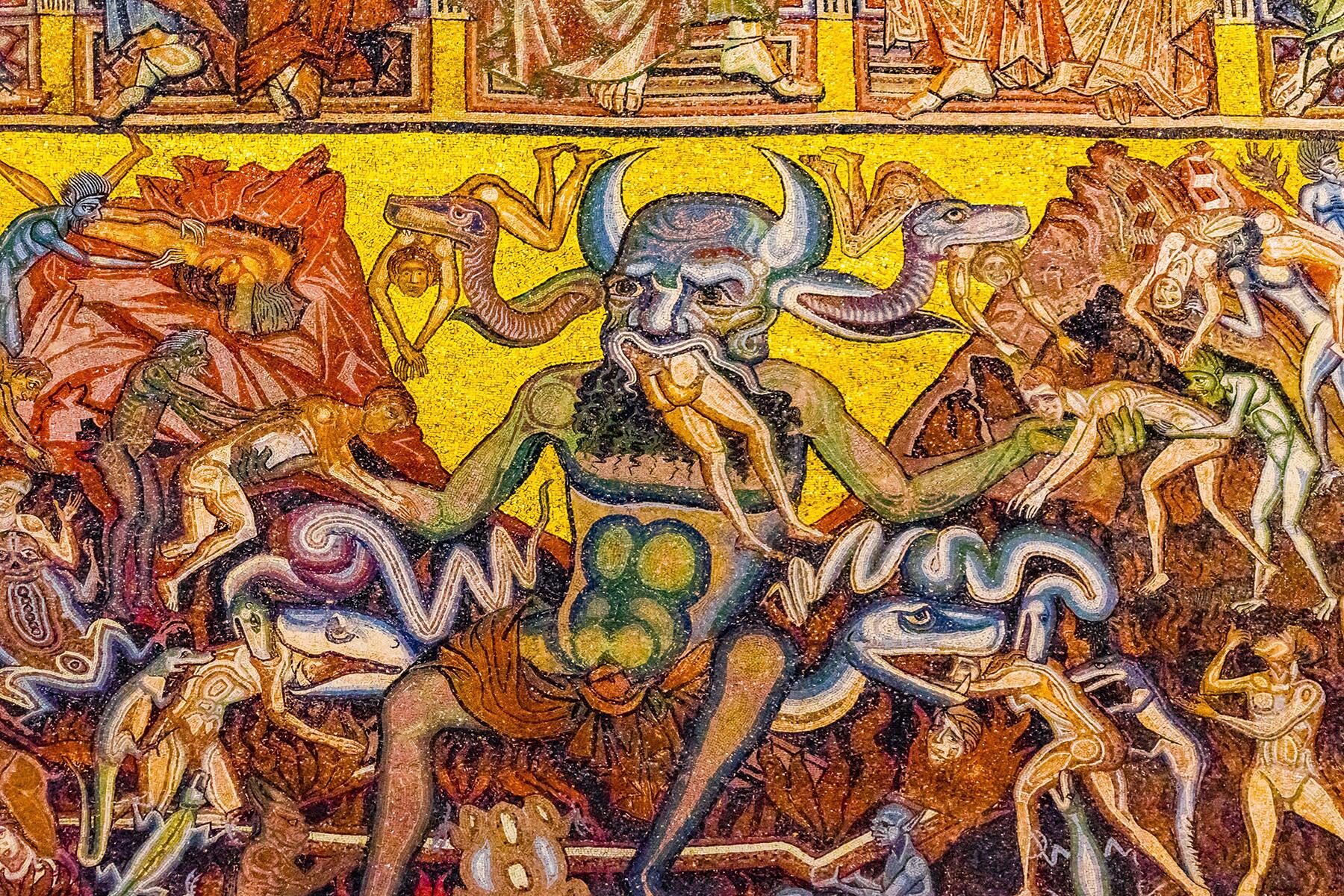From a Lucifer fountain to Satan’s footprint, these 12 European attractions are dedicated to the Devil.
After the fall of the Roman Empire, Christianity spread across Europe and introduced the idea of the Devil to millions of people. Since then, Satan has loomed large in the lives of Europeans, inspiring many to create dark art and legends in his infernal name.
In the Middle Ages, Christians usually depicted the Devil as a monstrous or goat-like figure. Later, the 19th-century Romantic writers hailed Satan as a metaphor for reason, courage, and defiance, which inspired contemporary artists to portray him as a beautiful fallen angel. Today, the Devil has become a pop culture icon: travelers can take selfies with a smiling Satan statue or sip on “the devil’s cup” at a bar christened in his honor.
In my upcoming book, The Little Book of Satanism: A Guide to Satanic History, Culture and Wisdom, I chronicle the “mark of the beast” over the centuries, from his debut in the Bible to the birth of modern Satanism, including The Church of Satan and The Satanic Temple. While Satan’s influence is felt worldwide, here are twelve of the most intriguing places in Europe where the horned one has left his hoofprint.






One of your best articles in ages - unusual, quirky, irreverant - miles better than scaremongering about pickpockets in Europe. More of this please!
Thanks so much, I'm very glad you enjoyed my article! There are more of my Fodor's pieces (which tend to be on the quirky side) at https://www.fodors.com/news/author/lacarmina - and I blog about alt culture worldwide at lacarmina.com and @lacarmina social media!